
Korean Art. Celadon duck-shaped water dropper. Goryeo Dynasty, 12th century. Private Collection. /Christophel Fine Art/Universal Images Group via Getty Images
Emerging during a period of great economic and cultural growth during the reign of the Korean Goryeo dynasty (918–1392), Goryeo celadon is an enduring testament to the artistic and technical achievement of Korean potters. This exceptionally beautiful and refined type of Korean ceramics is characterized by its green color palette and the use of special glazes. But its appeal is not only esthetic—each piece has been crafted for beauty and durability and has captured the hearts of both domestic and international audiences for centuries.
There are several theories about the origin of the European name for these ceramics. The most popular one refers to the character Celadon, a shepherd in the pastoral romance L'Astrée by the seventeenth-century French writer Honoré d'Urfé.i
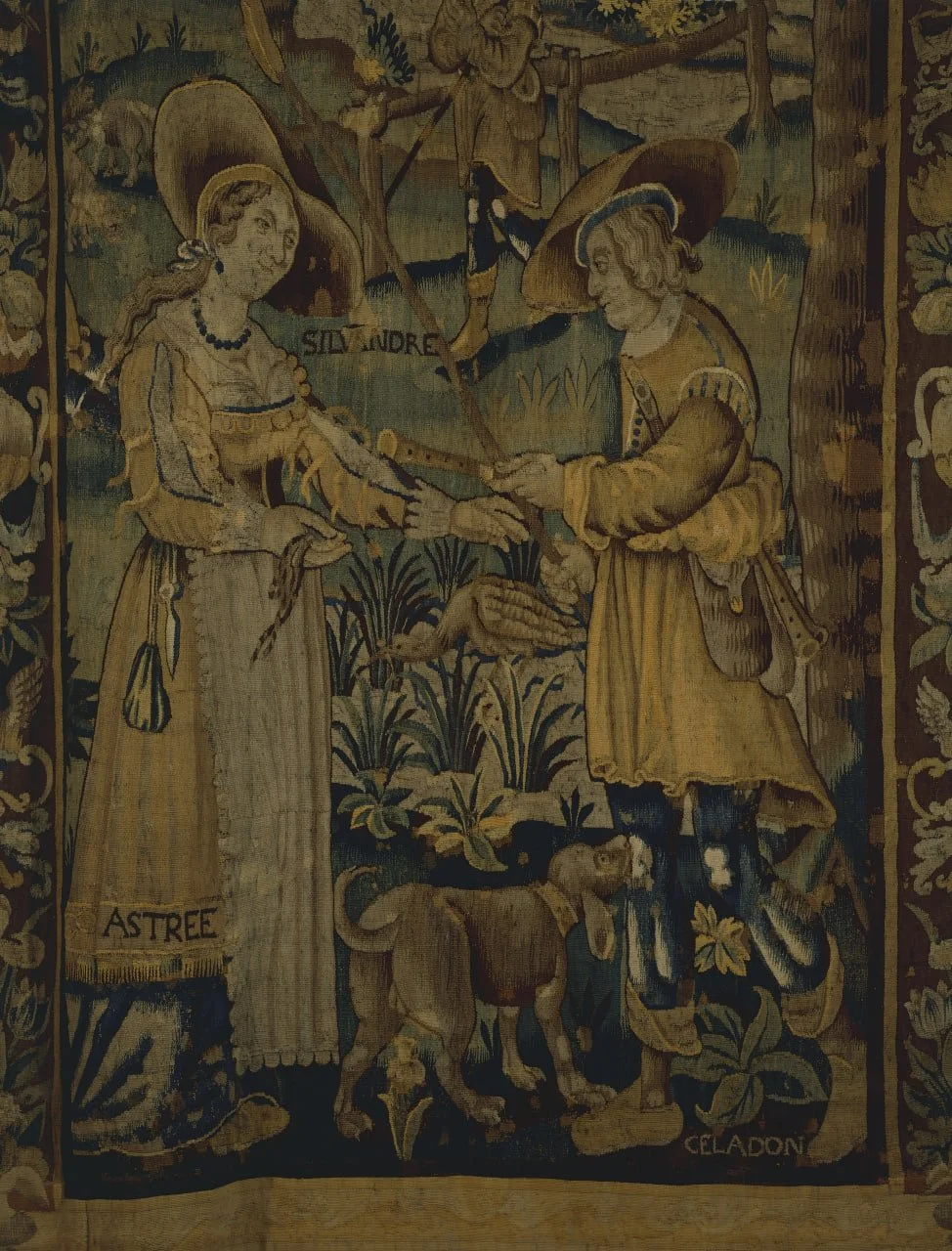
Astrea and Celadon, 17th century French tapestry depicting an scene from Astree, a novel by Honore' d'Urfe' (1568-1625), manufacture of Aubusson. Chateau de la Bastie d'Urfe, France/DeAgostini/Getty Images
Celadon’s Chinese Origins
In China, the original home of celadon ceramics, jade was valued more highly than gold and silver. This mineral possesses a complex array of shades, ranging from almost white with a subtle greenish-creamy hue to dark gray-green and deep sea green. After the stone is polished, it acquires a glossy, ‘oily’ surface, and a slight translucence. Jade was believed to embody all the six virtues of a person: benevolence, wisdom, moderation, justice, purity, and courage, and there are many ancient Chinese proverbs linking human qualities to jade. For instance, one proverb says: ‘Unpolished jade does not shine’, emphasizing the importance of upbringing and education. Jade has been a sacred stone in China since the Neolithic era, and it is often used to make ritual objects. Jade is also closely associated with erotic imagery—it’s worth mentioning that the Chinese euphemisms for genitalia often include the adjective jade, such as ‘jade rod’ and ‘jade cup’.
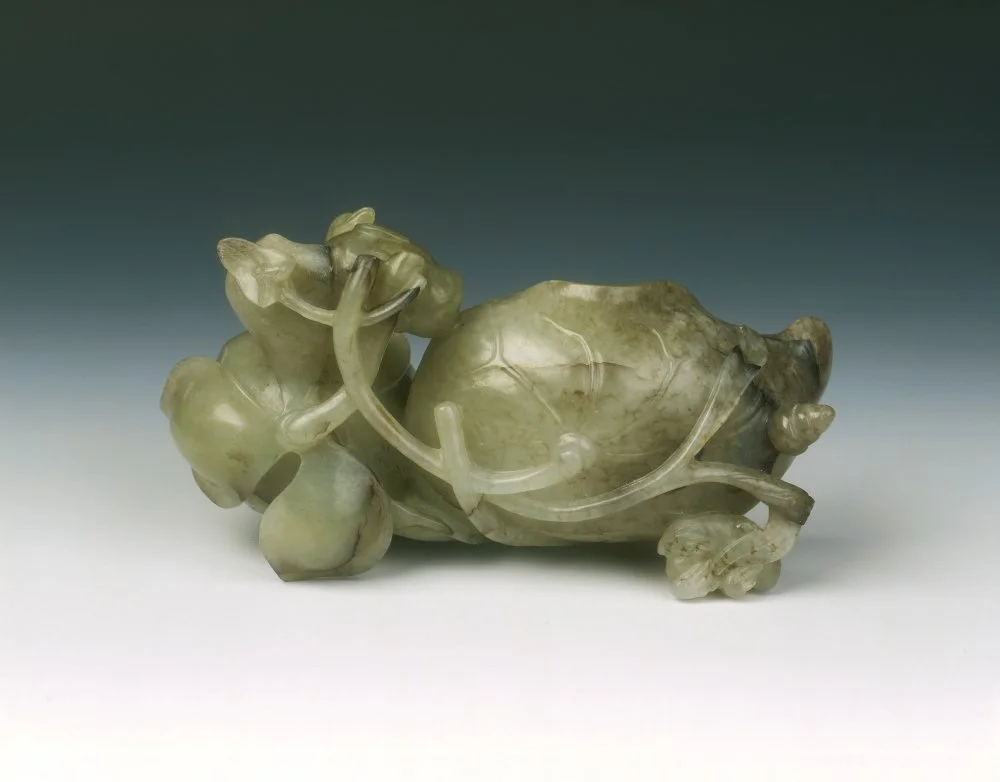
Jade lotus brushwasher, late Ming dynasty, China, 1550-1644. These plants and animals combine to form a rebus 'May you have an abundance of sons every year'/Getty Images
Jade was expensive, and thus people desired objects that somewhat resembled it in color and texture. It was precisely because of these attempts to achieve the color, sheen, and semi-transparent texture of jade that Chinese artisans developed their formulas for the celadon glaze. The exact time celadon was created is difficult to pinpoint, but Chinese scholars associate the production of the first proto-celadons with the Eastern Han Dynasty (25–220 CE) and the Zhejiang province. As the skill of Chinese potters grew and the technology advanced, true celadons emerged in northern China by the end of the Tang Dynasty (tenth century), featuring glossy wares with intricate green hues imitating the natural patterns of stone.
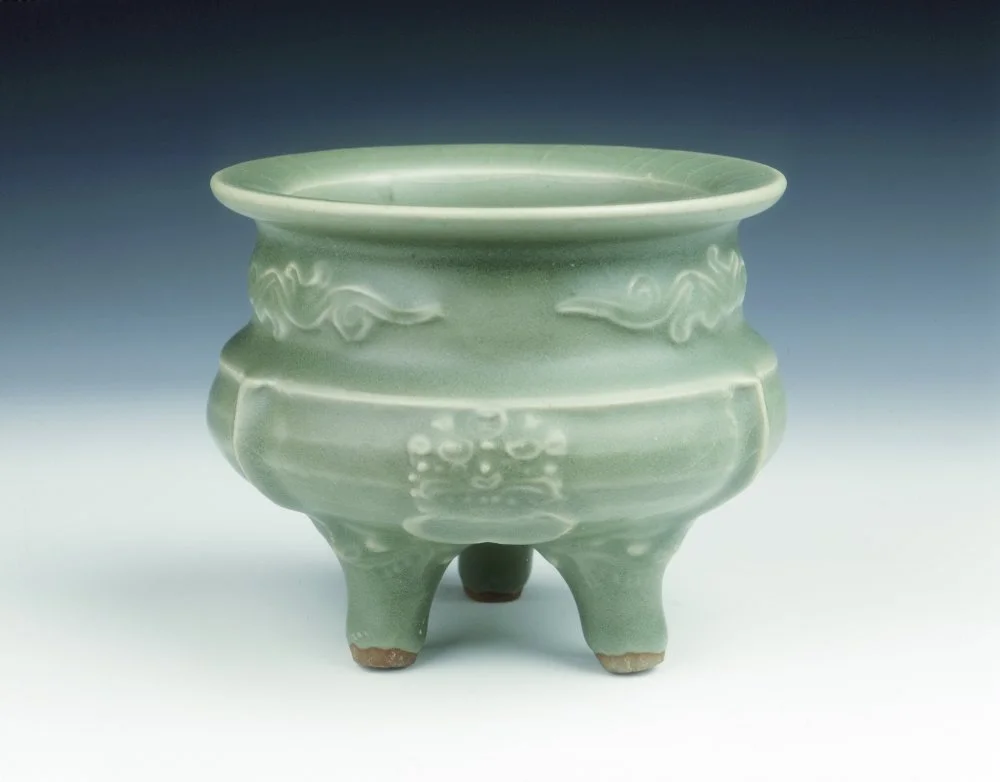
Longquan celadon tripod censer with dragon appliques, Yuan dynasty, China, late 13th-early 14th century/Getty Images
Around this time, the state of Goryeoi
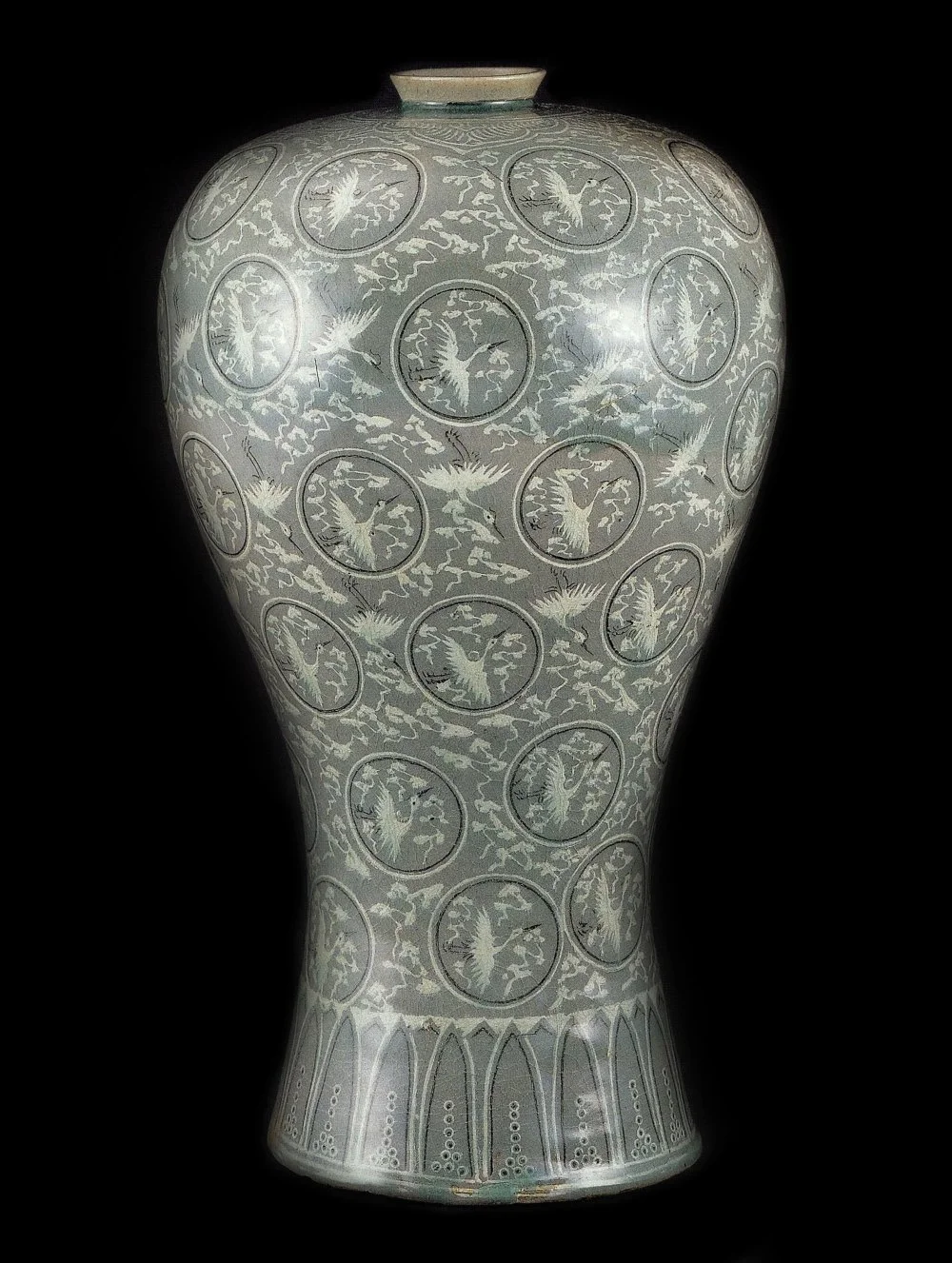
Celadon prunus vase with Inlaid cloud and crane design. 12th century. Collection of the National Palace Museum of Korea/The Oriental Applied Arts/Getty Images
The refined vessel shapes, strict colors, elegant compositions, and graceful relief graphics evoked admiration even from seasoned Chinese connoisseurs. In 1123, the Chinese scholar Xu Jing visited Korea and wrote a book called Xuan-He Feng Shi Gao Li Tu Jing (Illustrated Record of an Embassy to Korea in the Xuan-He Era), in which he praised Korean utensils and emphasized their uniqueness, stating that they were as good as their Chinese counterparts and even surpassed them. This was an extremely rare acknowledgment for a medieval Chinese author; traditionally, his contemporaries viewed the world beyond China as a pale and inferior reflection of the Celestial Empire.
The ‘Kingfisher Color’
Goryeo ceramic craftsmanship reached its peak from the mid-eleventh to the end of the twelfth century, during which some exquisite pieces were created to adorn temples and palaces. In the twelfth century, a special type of glaze known as ‘kingfisher color’i
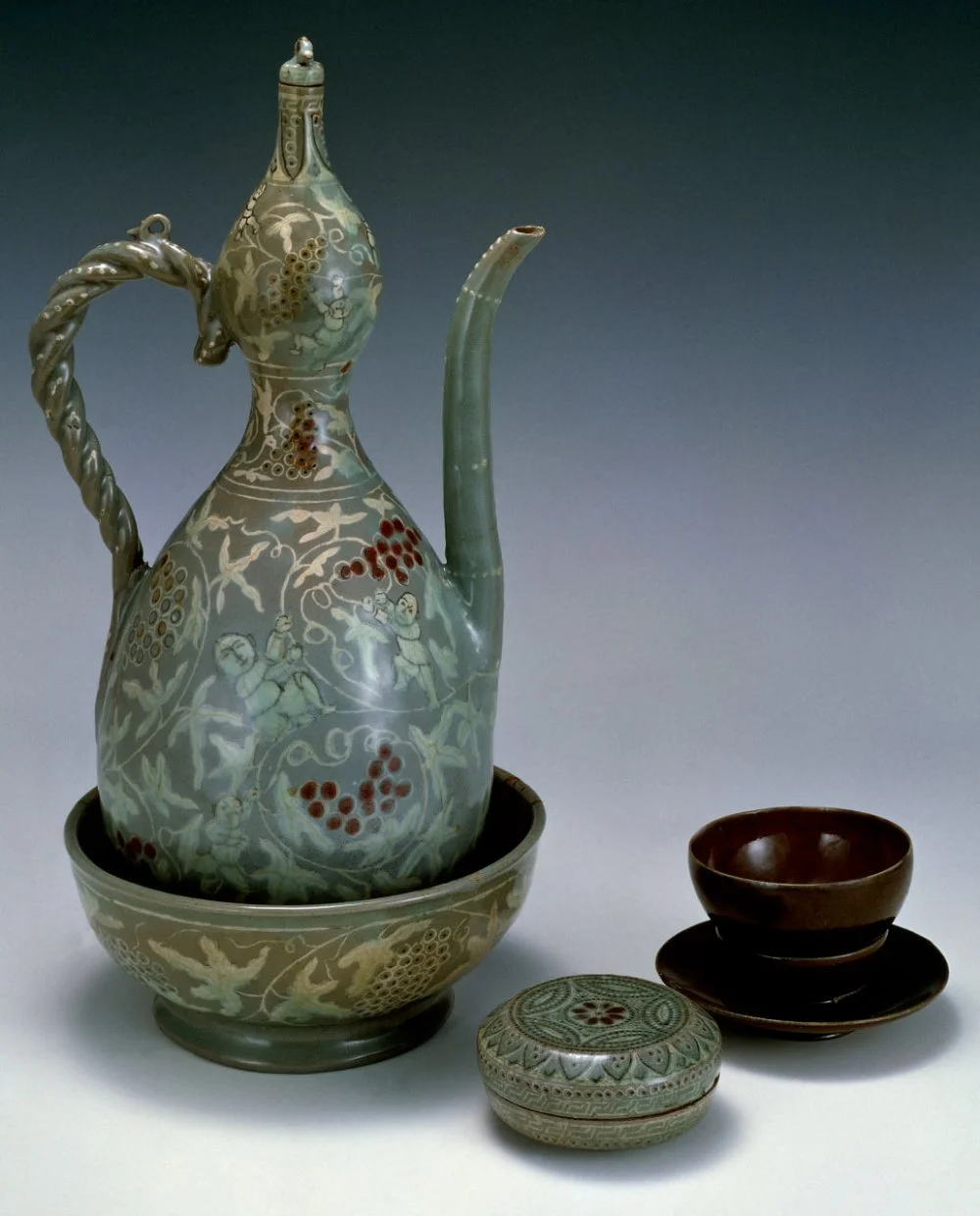
Cup decorated with lotus leaves and a wine jug decorated with figures of boys picking grapes, celadon ceramic with engravings, Korea. Korean Civilisation, Goryeo dynasty, 10th-14th century/Getty Images
In 1231, with the onset of the Mongol invasion, the renowned art of Goryeo celadon began to decline, a loss from which it never fully recovered. When the relations with the Mongols gradually improved, the industry saw a partial revival, but the secret of the kingfisher color was lost.
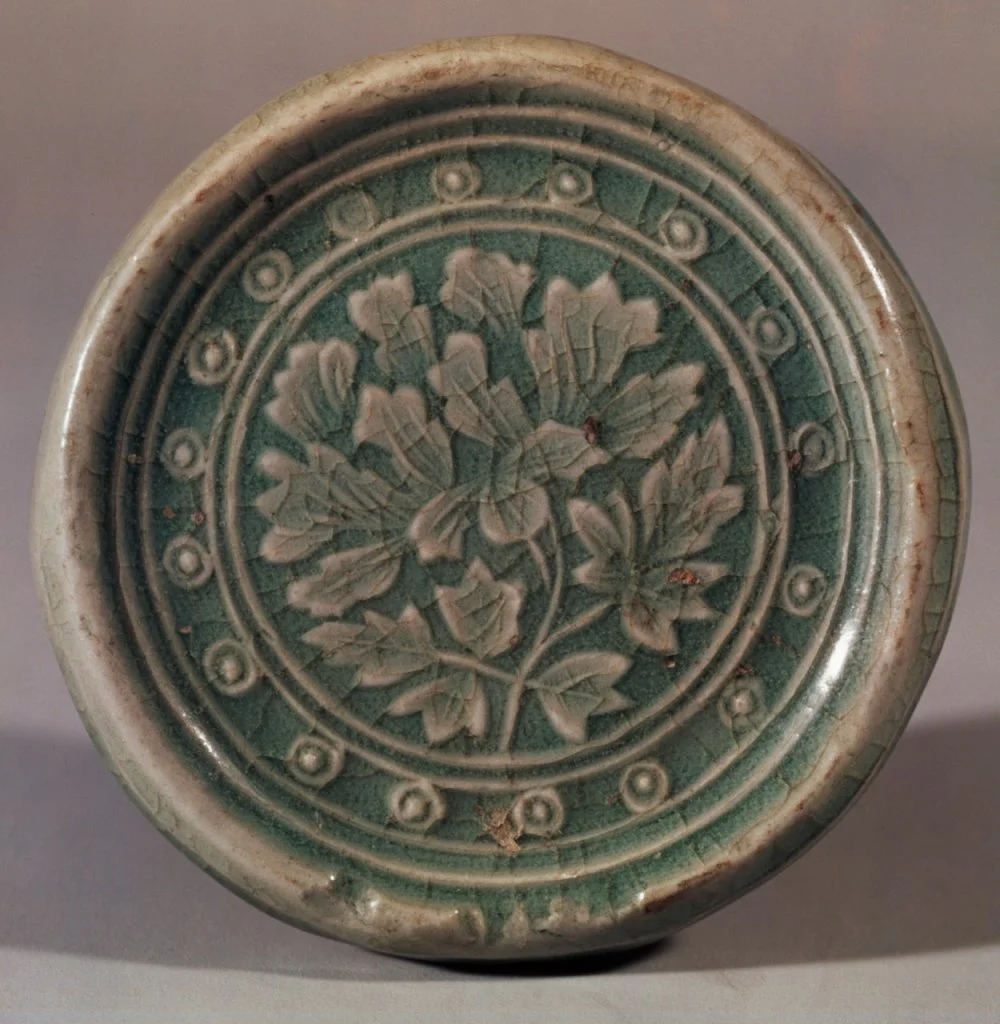
Disc for roof decoration with peonies in relief, celadon ceramics, Korea, 12th century/DeAgostini/Getty Images
Japanese Robbers
Later, two more major trends emerged in Korean ceramics, buncheong and baekja, along with several other crafts that were simpler in design and cheaper to produce. While they did not match the ancient specimens, these ceramics soon became more accessible to a wider range of people. Here, the craft could have experienced a revival, but from the late sixteenth century, a series of Japanese invasions disrupted Korean ceramics again. The Japanese actively abducted Korean craftsmen, including weavers, blacksmiths, and potters, often taking entire families and sometimes entire settlements. This led to Japanese ceramics acquiring a number of characteristic Korean features, but the Korean art itself suffered greatly, and traditional Korean crafts never fully recovered. During the Japanese colonization of Korea from 1910 to 1945, the country's ancient heritage was exported. antique Korean porcelain and ceramics gained popularity worldwide, and the Japanese actively purchased ancient art objects. Even a ‘funerary crafts’ industry developed as grave robbers looted ancient tombs where many ceramics and porcelain served as burial vessels. They pierced the ground with metal rods to identify voids for excavation in ancient cemetery sites. This barbaric method destroyed many beautiful items, and what remained was taken out of the country into collections across Japan, America, and Europe.
Celadon Today
It was only in the 1950s that South Korean artists began to restore the production technologies of traditional ceramics, focusing primarily on Goryeo celadon. Of course, modern scientific and resource capabilities greatly contributed to uncovering many ancient secrets, but many recipes from the past are still in the process of being restored and rediscovered. Nevertheless, modern Goryeo celadon is as exquisite, intricate, and interesting as the classic examples. It is also expensive—prices for handmade Korean celadon are very high.
The production of modern celadon is concentrated in several villages, with the largest located in the village of Icheon near Seoul, where there are about eighty workshops. Every two years, a nationwide ceramics fair is held here, and one can buy the works of potters, observe the process of creating pottery and other items, or even try their hand at the potter's wheel.
Recommended Readings:
Е.И. Гельман. «Очерки истории селадонов» // В сборнике «Генуэзская Газария и Золотая орда», 2019.
Карина Ким. «Поднебесный нефрит. Керамика королей», год издания не указан.
Андрей Ланьков. Загадка Северной Кореи. Курс для проекта Qalam


